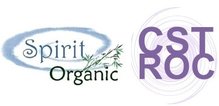Human bodies are built to be in motion. We breathe better, our hearts are healthier, we move our bowels more comfortably if we are in motion throughout the day. Natural movements can be the most effective way to maintain optional range of motion in all of our body parts.
People born with or who acquire disabilities that make them unable to move on their own must be moved by others or their bodies don’t function well. Turning, repositioning, and stretching must be done or the skin, organs and joints suffer.
Imagine your body as a sweater – a sweater knitted to be shaped like you. Now imagine that sweater is not just the outside surface of your skin, but that the knitting is also within your body – a 3D representation of you. The tissue that is our knitting is called fascia and it is ubiquitous in the body. It is responsible for holding every part of us together. A fascial membrane supports and protects the brain within the skull. Fascial sheets and compartments support and separate muscles, bones, joint capsules and organs. Fascia protects and supports lymph and blood vessels. Fascia bundles muscle fibers and connects bones to each other. Fascia has interesting properties: it can soften and reshape itself when it is heated or compressed.
Sweaters can lose their shape. They can get over-stretched. Yarn can get pulled, creating lines of tension across the garment, warping it into less-functional (and less attractive) shapes. When we wash a sweater, we “block” it – we reshape it carefully so that it will dry in in a more functional and attractive shape.
Sitting for long periods causes our fascia sweater to reshape itself to the sitting position, which is not optimal for other activities. In order for our fascia sweater to stay strong and pliable, it needs to move in many different ways. Movement of the body creates heat and pressure, allowing the fascial sweater to “reblock” itself and find its way back to a more functional and comfortable shape, allowing for optimal movement of blood, lymph and joints. In addition to the structural benefits of movement, twenty to thirty minutes of sustained movement oxygenates the brain and promotes the production and circulation of mood-enhancing neurotransmitters. A fascia sweater that moves well and holds it shape is a hedge against depression and lethargy.
Movements of everyday life can be enough. Walking twenty minutes a day greatly benefits the heart and the musculoskeletal system. Lawn and garden work, house cleaning, or any other activity that requires squatting, bending and twisting can keep muscles stretchy and strong while massaging the internal organs.
Your body has many parts, made to move through space in many directions and with a wide range of motion. Keep those parts well-lubricated and well-shaped by moving in many different ways through your day.


 RSS Feed
RSS Feed